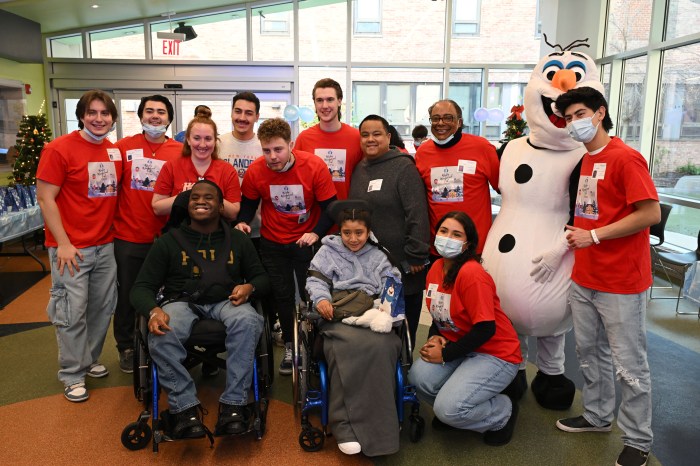With tools and a power drill in hand, physical therapists at Bayside’s St. Mary’s Hospital for Children participated in a workshop altering toy ride-on cars for patients and community kids with limited mobility.
St. Mary’s pediatric and occupational therapists received hands on training modifying six red toy ride-on cars over the course of two days at the first-ever Go Baby Go workshop held at the hospital on May 10.
Go Baby Go is a 150 chapter international organization that is dedicated to getting adults and kids with significant disabilities moving in their real world, according to Cole Galloway, a professor at the University of Delaware and founder of Go Baby Go.

“They’re learning how to strip wires, change electronics, and use everyday materials like kickboards and pool noodles — things you can get at a local hardware store for low-cost modification,s so that kids with any types of abilities will be able to drive these cars,” said Galloway. “We’ve done probably about 8,000 cars worldwide with trainings like this.”
It takes about 38 minutes to an hour to modify the level one toy cars that are equipped with a big red switch to help kids maneuver the vehicle exploring their surroundings.

The workshop is part of a bigger initiative of a cist of technology in finding ways to have St. Mary’s patients who have restricted mobility to partake in something that is different and fun, said Elizabeth Alfonso, physical therapy supervisor of Rehabilitation Services.
“We found that once we put a child in the car it was completely amazing,” said Alfonso. “He had such a good time – his eyes were bright and lit up just exploring. We’re all very excited so far. Everyone loves it and once we get good at modifying and our principles and basics down, we can continue to grow and make more cars for all of our kids.”
With a push of a button, 4-year-old Lucas Spina rolled out into the hallway with a smile on his face.
“We struggled with trying to find toys given restrictions on his abilities,” said Greg Spina. “It’s been hard to find things that he can use as a kid without us being involved. This is awesome. I feel like it gives him a chance to do something on his own and be mobile on his own. He really hasn’t had that before, so I think it’s a wonderful thing and I’m grateful that they’re doing this for him.”
According to Jillian Cohen, a physical therapist at St. Marys, the modified cars gives children — who are mostly in wheelchairs or seating systems requiring assistance — an opportunity to be a little bit more independent, she said.


“With Lucas, we adapted the car because he’s better at using his left hand for steering. We just changed out the steering wheel so that he can use his left hand to try to steer and giving him use of his right arm which he tends to neglect,” said Cohen. “We put the switch in a place that encourages him to use that right arm and still be able to steer with the left working on two tasks at the same time.”
For Cohen, working on the cars was an overall fun experience.
“Trying to figure out all of the wiring, it’s a tricky thing but it’s so cool to see how we can take such a simple toy and change it to something that is better for other kids to be able to use,” said Cohen. “I don’t even know if there are words to describe how awesome it is to see these kids be able to move when we’re working so much with them in our sessions with learning how to stand, walk and crawl. But to see them get into the car and figure out that they can actually find a way to move themselves without working as hard while they’re developing skills gives them a great opportunity to self-explore.”



































